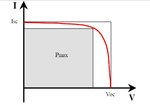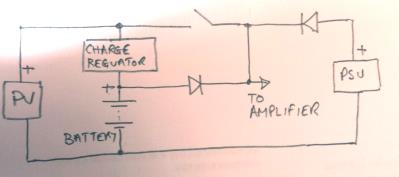rahdirs
Advanced Member level 1

Hi all,
I designed a power amplifier shown in schematic 3(https://www.edaboard.com/threads/289823/#post1241393)that provides a current gain from 25 mA to 10 A keeping the voltage constant.The input to the power amplifier is an almost constant DC voltage between 11 & 12 V and at 15-25 mA. I need an output at same voltage and 10 A.
In that case the power amplifier was providing current by taking it from 18 V DC source.
Now i have a source which gives constant current of 7 A but it's voltage varies as shown in figure 2.Can i use this source to provide current to power amplifier instead of 18 V DC source.
What i'm trying to say is like using that source to implement power amp as in the schematic 1 with ideal current source.It looks fine with current source but in my case voltage is also varying.
I designed a power amplifier shown in schematic 3(https://www.edaboard.com/threads/289823/#post1241393)that provides a current gain from 25 mA to 10 A keeping the voltage constant.The input to the power amplifier is an almost constant DC voltage between 11 & 12 V and at 15-25 mA. I need an output at same voltage and 10 A.
In that case the power amplifier was providing current by taking it from 18 V DC source.
Now i have a source which gives constant current of 7 A but it's voltage varies as shown in figure 2.Can i use this source to provide current to power amplifier instead of 18 V DC source.
What i'm trying to say is like using that source to implement power amp as in the schematic 1 with ideal current source.It looks fine with current source but in my case voltage is also varying.
Attachments
Last edited:











